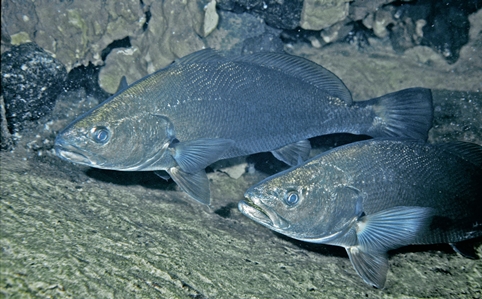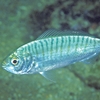General Description
Body slender, rounded above, straighter below, dorsal-fin long-base, deeply-notched, tail rounded, pointed in juveniles; mouth large, with a slightly protruding lower jaw. Grey above, silvery below, with a black blotch above pectoral fin base. To 2 m.
Biology
The Mulloway is a migratory species and follows schooling fishes on which it feeds. It is also a popular recreational fish along the southern coast. It sometimes swims into the upper parts of Victoria's Port Phillip Bay.
Habitat
Coastal waters, off ocean beaches, often moving into bays and estuaries to feed, in depths of 0-150 m.
Open water
Distribution guide
Parts of Africa, India, Pakistan and Asia. Southern Australia.
Species Group
Depth
Shore (0-1 m)
Shallow (1-30 m)
Deep ( > 30 m)
Water Column
Max Size
2 m
Diet
Carnivore
Commercial Species
Yes
Global Dispersal
Recorded in Australia
Conservation Status
- DSE Advisory List : Not listed
- EPBC Act 1999 : Not listed
- IUCN Red List : Not listed





